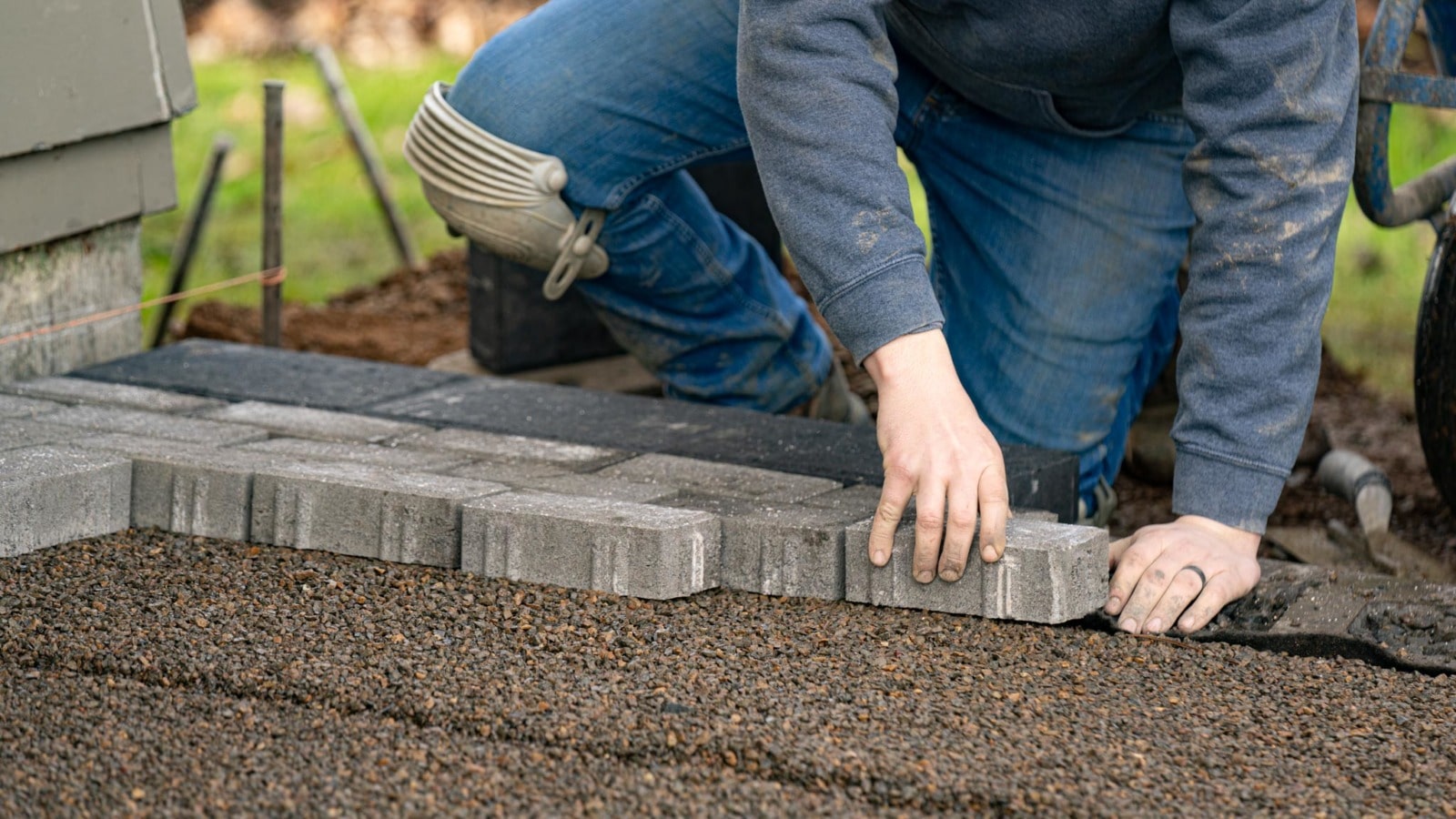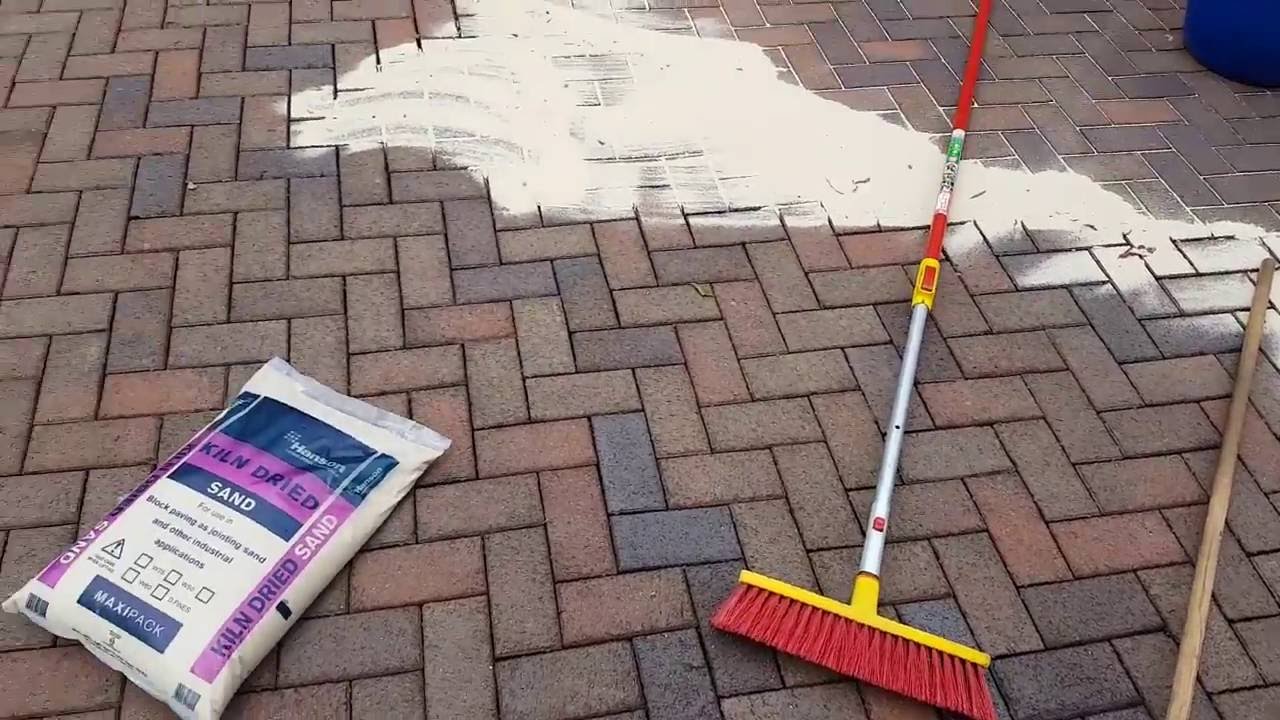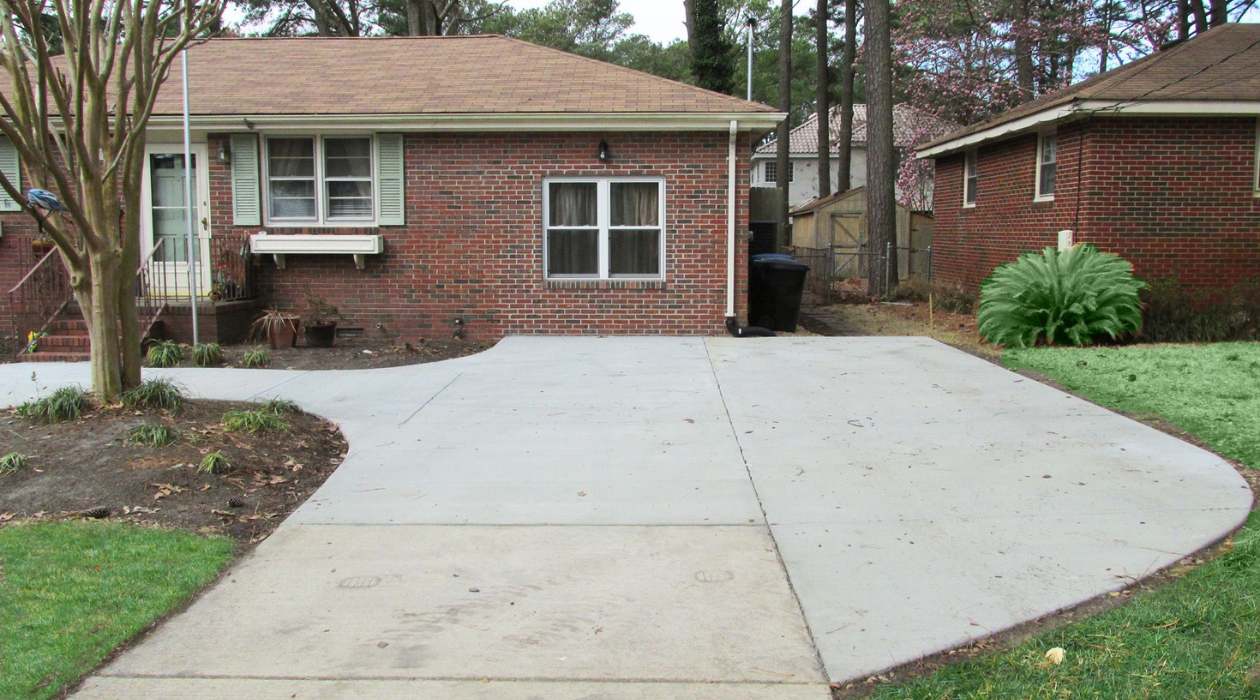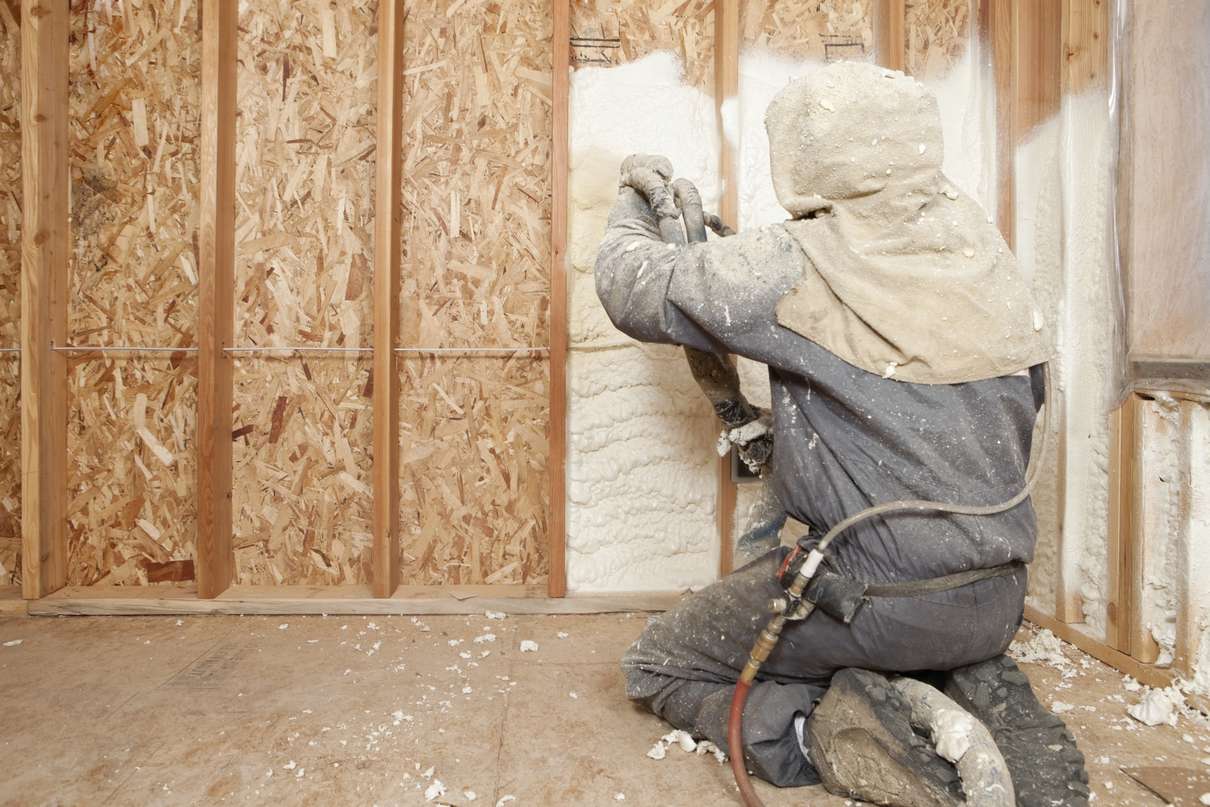

Articles
How To Pave Your Own Driveway
Modified: February 23, 2024
Discover step-by-step articles on how to pave your own driveway. Save money and add value to your property with our helpful guides.
(Many of the links in this article redirect to a specific reviewed product. Your purchase of these products through affiliate links helps to generate commission for Storables.com, at no extra cost. Learn more)
Introduction
Welcome to the ultimate guide on how to pave your own driveway! Whether you’re looking to save some money or want to tackle a new DIY project, paving your own driveway can be a rewarding and cost-effective endeavor. With proper planning, preparation, and some basic tools, you can have a beautiful driveway that enhances the curb appeal of your property.
Paving a driveway involves several steps, including assessing the project, gathering materials and tools, clearing and preparing the area, establishing proper drainage, setting the base, adding the subbase, compacting the subbase, laying the pavers, cutting and fitting the pavers, and adding the finishing touches. By following this comprehensive guide, you’ll be well-equipped to successfully pave your own driveway.
Before diving into the process, it’s important to note that paving a driveway requires some physical labor and attention to detail. It’s crucial to take your time, follow the instructions carefully, and prioritize safety throughout the project. While this may seem intimidating at first, with a little patience and effort, you’ll be able to achieve professional-looking results.
Additionally, it’s wise to check with your local authorities regarding any necessary permits or regulations for driveway paving. This ensures that you comply with any legal requirements and maintain the integrity of your property.
So, let’s get started on the journey of transforming your driveway into a smooth and aesthetically pleasing entryway. Whether you have a gravel driveway you want to pave or are starting from scratch, this guide covers everything you need to know to pave your own driveway successfully. Let’s begin by assessing the project at hand.
Key Takeaways:
- Transform your driveway into a stunning entryway by following this comprehensive guide. From assessing the project to laying the pavers, achieve professional results with DIY paving.
- Save money and enhance your property’s curb appeal by paving your own driveway. With careful planning and attention to detail, create a durable and beautiful entryway.
Read more: How Long Does It Take To Pave A Driveway
Assessing the Project
Before you begin paving your driveway, it’s essential to assess the project and determine the scope of work involved. This step helps you plan and gather the necessary materials and tools, ensuring a smooth and efficient process.
Start by measuring the area of your driveway. Measure the length and width, and calculate the total square footage. This information will help you estimate the quantity of materials needed, such as pavers, base material, and edging.
Next, consider the existing condition of your driveway. Is it already paved or is it a gravel or dirt surface? If it’s already paved, assess the condition of the existing pavement. Are there cracks, potholes, or uneven sections that need to be repaired or replaced? Take note of any necessary repairs before proceeding with the paving process.
If your driveway is currently a gravel or dirt surface, you’ll need to clear it completely before beginning. Decide whether you want to remove the existing material entirely or pave over it. Keep in mind that paving over an existing gravel or dirt surface can save time and effort, but it may not provide the same level of stability as starting from scratch.
Consider the layout and design of your driveway. Do you want a straight, curved, or circular driveway? Will you incorporate any additional features, such as a walkway or decorative border? Visualize how you want your finished driveway to look, as this will help you plan the layout and choose the appropriate materials.
Lastly, assess the climate and environmental conditions in your area. Take into account factors such as rainfall, temperature fluctuations, and the type of soil. These factors can affect the durability and longevity of your driveway, so it’s important to choose materials that can withstand your specific climate and soil conditions.
By thoroughly assessing the project, you’ll have a clear understanding of what needs to be done and can proceed with confidence. You’ll be well-prepared to gather the necessary materials and tools and tackle the next steps in paving your own driveway.
Gathering Materials and Tools
Once you have assessed the project and determined the scope of work involved, it’s time to gather the necessary materials and tools for your driveway paving project. Having everything you need on hand will save you time and ensure a smooth process from start to finish.
Here is a list of materials and tools you will need:
- Pavers: Choose the type, size, and color of pavers that best suit your desired aesthetic and budget. Consider factors such as durability, slip resistance, and maintenance requirements when selecting your pavers.
- Base Material: This is the layer beneath the pavers that provides stability and support. Common base materials include crushed stone, gravel, or sand. The quantity will depend on the size of your driveway and the recommended thickness of the base.
- Edging: Edging helps to contain the pavers and maintain the shape of the driveway. Options include plastic or metal edging, which can be easily installed and provide a neat and finished appearance.
- Compactor: A compactor is used to compact the base material and ensure a solid and stable foundation for the pavers. Renting a compactor from a local equipment rental store is usually sufficient for a driveway paving project.
- Shovel: A sturdy shovel is essential for digging and leveling the area.
- Rake: A rake is useful for smoothing the surface, spreading the base material, and ensuring an even layer.
- Tape Measure: Accurate measurements are crucial for calculating the quantity of materials needed and planning the layout of the driveway.
- Mallet or Rubber Hammer: These tools are necessary for tapping the pavers into place and ensuring they are securely set.
- Circular Saw or Paver Splitter: These tools are used to cut and fit the pavers around edges, curves, or obstacles in the driveway.
- Safety Gear: It’s important to prioritize safety during the project. Wear work gloves, safety glasses, and sturdy footwear to protect yourself.
Before purchasing or renting any materials or tools, it’s a good idea to create a detailed shopping list based on the measurements and requirements of your driveway. This will help you stay organized and ensure you have everything you need before starting the project.
Once you have gathered all the necessary materials and tools, you’re ready to move on to the next phase: clearing and preparing the area for paving.
Clearing and Preparing the Area
Clearing and preparing the area is an important step in paving your own driveway. This initial preparation ensures a clean and smooth surface for the new driveway and helps prevent any future issues that may arise.
Follow these steps to clear and prepare the area:
- Remove any obstacles: Begin by removing any objects, debris, or vegetation from the driveway area. This includes rocks, tree roots, branches, and any other items that could hinder the paving process.
- Mark the boundaries: Use stakes and string to mark the boundaries of your driveway. This will serve as a guide and help you maintain a straight and consistent layout during the rest of the project.
- Excavation: Depending on your specific driveway project, you may need to excavate the area to achieve the desired depth. Use a shovel to dig out the existing surface, ensuring you reach the desired depth. Remove the excavated soil and set it aside for later use or disposal.
- Compact the soil: After excavating, use a compactor or tamper to compact the soil underneath. This step helps to create a stable and solid foundation for the base material.
- Grade the area: Use a rake to smooth out the surface and create a slight slope. This slope will ensure proper drainage of water away from the driveway. A recommended slope is 1/4 inch per foot.
- Install edging: If you’re using edging material, now is the time to install it along the edges of the driveway. Follow the manufacturer’s instructions for proper installation.
Clearing and preparing the area is a crucial step that sets the stage for the rest of the project. By ensuring a clean and level surface, you’ll be able to proceed with the subsequent steps, such as establishing proper drainage and setting the base material.
Once the area is cleared and prepared, it’s time to move on to the next step: establishing proper drainage.
Establishing Proper Drainage
Proper drainage is essential to ensure the longevity and functionality of your paved driveway. Without adequate drainage, water can accumulate and cause damage to the driveway, leading to cracks, shifts, and a reduced lifespan for the paving material. Establishing proper drainage will help protect your investment and maintain the integrity of your driveway.
Follow these steps to establish proper drainage for your driveway:
- Assess the natural slope: Evaluate the existing slope of the area surrounding your driveway. Ideally, you want the driveway to have a downward slope away from your property. This allows water to flow away from the driveway and prevents pooling.
- Create a crown: A crown is a slight upward slope in the center of the driveway that helps water flow to the sides. Use a level or straight edge to determine the highest point of the driveway, usually located in the middle. From this point, slope the driveway down towards the edges.
- Consider adding drainage solutions: Depending on your specific circumstances, you may need to incorporate additional drainage solutions, such as a French drain or a catch basin. These systems help direct excess water away from the driveway and prevent water accumulation.
- Plan for runoff: Ensure that the water runoff from your driveway does not cause issues on neighboring properties or create erosion. Plan for proper drainage by connecting downspouts from your gutters to a suitable drainage system or directing the runoff to an appropriate area.
By establishing proper drainage, you’re taking proactive steps to protect your driveway from potential water damage. By allowing water to flow away from the driveway, you minimize the risk of cracks, shifting, and other issues that can arise from water pooling or seeping into the paving material.
Once you have established proper drainage, you can proceed to the next steps of the project, including setting the base material and adding the subbase to create a solid foundation for your driveway.
Read more: How Much Does It Cost To Pave A Driveway
Setting the Base
Setting the base is a crucial step in the process of paving your own driveway. The base serves as a stable foundation for the pavers, providing structural support and ensuring proper weight distribution. By properly setting the base, you’ll create a long-lasting and durable driveway that can withstand heavy traffic and environmental factors.
Follow these steps to set the base for your driveway:
- Spread a layer of crushed stone or gravel: Start by spreading a layer of crushed stone or gravel over the prepared area. Make sure the layer is evenly distributed and meets the desired thickness recommended for your specific paving material. Typically, a base thickness of 4 to 6 inches is sufficient for residential driveways.
- Compact the base material: Use a compactor or tamper to compact the base material. This process helps to eliminate air pockets and creates a solid and stable foundation for the pavers. Compact the base in multiple passes, making sure to cover the entire area and achieve a uniform level surface.
- Check for proper slope and level: As you compact the base material, periodically check for proper slope and level using a level or straight edge. Adjust the base as needed to ensure a consistent slope away from your property and a level surface for the pavers.
- Regularly moisten the base material: Dampen the base material with water during the compaction process. This helps to improve the compaction efficiency and ensures a more solid base.
Setting the base is a critical step in the driveway paving process. It establishes a strong foundation that supports the weight of the pavers and evenly distributes any loads that may be applied to the driveway. The properly set base will help prevent issues such as sinking, shifting, or cracking of the pavers over time.
Once the base is set, you’re ready to move on to the next step: adding the subbase to further enhance the stability and durability of your driveway.
When paving your own driveway, make sure to properly prepare the base by removing any vegetation, compacting the soil, and adding a layer of gravel for stability. This will ensure a long-lasting and durable driveway.
Adding the Subbase
Adding a subbase layer is an important part of the driveway paving process as it provides additional stability and support to the base material. The subbase acts as a buffer between the base and the underlying soil, helping to distribute the load and prevent the driveway from sinking or shifting.
Follow these steps to add the subbase to your driveway:
- Excavate the area: If necessary, excavate the area to create space for the subbase. The depth of the excavation will depend on the recommended thickness of the subbase material.
- Add the subbase material: Spread a layer of coarse gravel or crushed stone as the subbase material. The thickness of the subbase layer will depend on the recommendations for your specific driveway project. Typically, a thickness of 4 to 8 inches is common for residential driveways.
- Level and compact the subbase: Use a rake to evenly distribute the subbase material over the excavated area. Once spread, use a compactor or tamper to compact the subbase layer. Compact in multiple passes to ensure a solid and stable subbase. Check for proper slope and level as you compact, making any necessary adjustments.
- Moisten the subbase: Similar to the base material, it’s important to periodically moisten the subbase during the compaction process. Moisten the subbase slightly to improve compaction efficiency and ensure a more solid subbase.
Adding the subbase provides additional strength and stability to your driveway. It helps to distribute the weight and any applied loads more evenly, reducing the likelihood of sinking or shifting over time. The subbase layer acts as a protective barrier that helps to maintain the integrity and longevity of your driveway.
Once the subbase is added and properly compacted, you’re now ready to move forward with the next steps in the driveway paving process. The subsequent steps involve laying the pavers and creating the desired pattern or design for your driveway.
Compacting the Subbase
Compacting the subbase is a crucial step in the driveway paving process. Proper compaction ensures a solid and stable foundation for the pavers, minimizing the risk of settling, sinking, or shifting over time. By thoroughly compacting the subbase, you’ll create a durable and long-lasting driveway that can withstand heavy traffic and environmental factors.
Follow these steps to compact the subbase for your driveway:
- Prepare the compactor: Start by making sure your compactor or tamper is in good working condition. Check the engine oil and fuel levels as per the manufacturer’s instructions. Make sure any safety features, such as the throttle or kill switch, are properly functioning.
- Begin compaction: Start compacting the subbase by running the compactor over the surface in straight, overlapping passes. Cover the entire area systematically, ensuring even compaction and avoiding any missed spots.
- Make multiple passes: For optimal compaction, make several passes over the subbase, gradually increasing the pressure with each pass. This helps to eliminate air pockets and create a more stable base for the pavers.
- Check for proper compaction: Periodically stop and check the compaction level by observing the surface for any signs of movement or soft spots. If you notice any areas that are not adequately compacted, go over them again with the compactor to achieve the desired level of compaction.
- Level the subbase: Use a straight edge or level to ensure the subbase is uniformly leveled. This step helps to create an even surface for the pavers and ensures proper installation.
- Moisten the subbase: Dampen the subbase with water during the compaction process. Moistening the material helps increase compaction efficiency and improves the overall stability of the subbase.
Compacting the subbase is essential for creating a solid foundation that supports the weight of the pavers and provides long-term stability. It’s worth investing the necessary time and effort in this step to ensure a high-quality driveway that will withstand the test of time.
Once the subbase is thoroughly compacted and leveled, you’re ready to move on to the next phase: laying the pavers and bringing your driveway to life.
Laying the Pavers
Laying the pavers is an exciting step in the driveway paving process. It’s when you see your project take shape and your driveway come to life. Properly laying the pavers is essential to create a visually appealing and functional surface that will withstand daily use and the elements. Follow these steps to lay the pavers for your driveway:
- Plan the layout: Before you start laying the pavers, plan the layout and pattern of your driveway. This includes determining the starting point, deciding on the orientation of the pavers, and considering any design elements or borders you want to incorporate. Dry-lay a few rows of pavers to ensure the desired look and fit.
- Start at the designated starting point: Begin laying the pavers at the designated starting point, typically the entrance of the driveway or a corner. Lay them in a predetermined pattern, following your planned layout. Leave a small gap, about 1/8 to 1/4 inch, between each paver for jointing material.
- Tap the pavers into place: Use a rubber mallet or a rubber hammer to tap each paver gently into place. Ensure that they are level with the surrounding pavers and that they fit snugly together. Continue laying the pavers row by row, working your way across the driveway.
- Check for proper alignment: Regularly check the alignment of the pavers as you progress. Use a string or straight edge to ensure a straight and even surface. Make necessary adjustments to maintain the desired pattern and alignment.
- Keep a consistent joint width: As you lay the pavers, ensure that you maintain a consistent joint width between them. This creates a uniform appearance and allows room for jointing material, such as sand or gravel, to be added later.
- Cut and fit the pavers as needed: When reaching the edges of the driveway or encountering obstacles, you will likely need to cut and fit some pavers. Use a circular saw or a paver splitter to carefully cut the pavers to the required size and shape. Ensure a precise fit before installing them.
Taking time and care in laying the pavers will result in a well-constructed driveway with a visually pleasing design. Regularly step back and assess the overall look of the driveway to ensure consistency and make any necessary adjustments.
Once all the pavers are in place, you can move on to the next step: jointing the pavers and completing the finishing touches to your beautifully paved driveway.
Read more: How To Own Your Own Construction Company
Cutting and Fitting the Pavers
When it comes to paving your own driveway, cutting and fitting the pavers is a crucial step in achieving a professional and polished look. Since driveways are often not completely rectangular, you will likely encounter edges, curves, or obstacles that require custom fitting of the pavers. By accurately cutting and fitting the pavers, you’ll create a seamless and visually appealing surface. Follow these steps to cut and fit the pavers for your driveway:
- Measure and mark: Begin by carefully measuring the area where you need to cut and fit the pavers. Use a measuring tape or ruler to ensure accurate measurements. Mark the pavers with a pencil or chalk, indicating the cut line.
- Choose the right tool: Depending on your specific needs and the type of pavers, you have a few options for cutting them. A circular saw equipped with a diamond blade or a paver splitter are commonly used tools for cutting pavers. Refer to the manufacturer’s instructions for proper use and safety precautions.
- Make the cuts: Using the chosen tool, carefully follow the marked cut lines to make the necessary cuts on the pavers. Take your time to ensure precision and accuracy. If you are making multiple cuts, consider using a straight edge or guide to keep the cuts uniform.
- Test the fit: After making the cuts, test the fit of the pavers in the designated area. Place them in position and ensure that they fit properly and align with the surrounding pavers. Make any necessary adjustments or additional cuts to achieve the desired fit.
- Ensure proper spacing: As you cut and fit the pavers, be mindful of maintaining the appropriate spacing and joint width. This ensures a consistent and aesthetically pleasing look. Use spacers or your desired method to achieve the desired spacing between the pavers.
- Check for level and alignment: Once the cut pavers are in place, check for levelness and alignment with a level or straight edge. Make any adjustments as needed to ensure a smooth and uniform surface.
Take your time when cutting and fitting the pavers to get the best results. Accuracy and attention to detail are key in achieving a professionally finished driveway. Remember to wear protective gear, such as safety glasses and gloves, when operating cutting tools.
Once all the pavers are cut and fitted, you’re almost done! The next step is to complete the finishing touches and ensure a polished appearance for your newly paved driveway.
Finishing Touches
As you near the completion of your driveway paving project, it’s time to add the finishing touches that will enhance its overall appearance and functionality. These final details will ensure a polished, professional look and provide the necessary protection for your newly paved driveway. Follow these steps to complete the finishing touches:
- Clean and sweep: Before applying any final touches, thoroughly clean the surface of the driveway. Remove any debris, dirt, or dust using a broom or a leaf blower. This will ensure a clean and smooth surface for the next steps.
- Apply jointing material: The jointing material is added between the pavers to create a stable and secure surface. Common options include polymeric sand or fine gravel. Follow the manufacturer’s instructions for proper application, making sure to fill all the joints evenly and completely.
- Compact the jointing material: Use a vibrating plate compactor or a hand tamper to compact the jointing material. This step helps to settle the material into the joints and create a solid bond between the pavers. Follow the manufacturer’s recommendations for the appropriate compaction technique.
- Sweep off excess material: After compacting the jointing material, sweep off any excess using a broom. This will help create a clean and finished appearance, ensuring that the joints are properly filled and compacted.
- Seal the pavers (optional): Depending on the type of pavers and your personal preference, you may choose to seal the surface. Applying a paver sealant can help protect the pavers from stains, erosion, and fading caused by exposure to the elements. Follow the manufacturer’s instructions for proper application and drying time.
- Add final touches: Consider adding any additional features or elements, such as decorative borders, walkway lighting, or landscaping around the driveway. These final touches can further enhance the visual appeal and functionality of your newly paved driveway.
Once you have completed these finishing touches, step back and admire your work. You’ll have a beautifully paved driveway that adds curb appeal to your property and provides a durable and functional surface for your everyday use.
Remember to perform regular maintenance, such as cleaning and periodic resealing, to keep your driveway looking its best and prolong its lifespan. With proper care, your newly paved driveway will provide years of enjoyment and add value to your home.
Congratulations on successfully completing your DIY driveway paving project!
Conclusion
Congratulations! You have reached the end of this comprehensive guide on how to pave your own driveway. By following the step-by-step instructions and incorporating the necessary techniques, you have gained the knowledge and confidence to tackle this rewarding DIY project.
Paving your own driveway can save you money and provide a sense of accomplishment as you transform a basic surface into a beautiful and functional entryway. Throughout the process, you have learned how to assess the project, gather materials and tools, clear and prepare the area, establish proper drainage, set the base, add the subbase, lay the pavers, cut and fit them where needed, and apply the finishing touches to create a polished final result.
Remember, attention to detail is key. Take the time to plan, measure, and execute each step carefully. By doing so, you will create a driveway that not only enhances the curb appeal of your property but also stands the test of time.
Always prioritize safety and use the appropriate protective gear when working with tools and materials. Check with your local authorities regarding any necessary permits or regulations for driveway paving, ensuring that your project complies with local guidelines.
Maintaining your newly paved driveway is essential for its longevity and appearance. Regular cleaning, periodic sealing, and addressing any repairs promptly will help preserve its beauty and functional integrity.
Now that you have learned how to pave your own driveway, you have the skills and knowledge to undertake this project with confidence. Enjoy the satisfaction of completing this DIY endeavor and marvel at the transformed entrance to your home.
Thank you for following this guide, and best of luck as you pave your own driveway!
Frequently Asked Questions about How To Pave Your Own Driveway
Was this page helpful?
At Storables.com, we guarantee accurate and reliable information. Our content, validated by Expert Board Contributors, is crafted following stringent Editorial Policies. We're committed to providing you with well-researched, expert-backed insights for all your informational needs.














0 thoughts on “How To Pave Your Own Driveway”